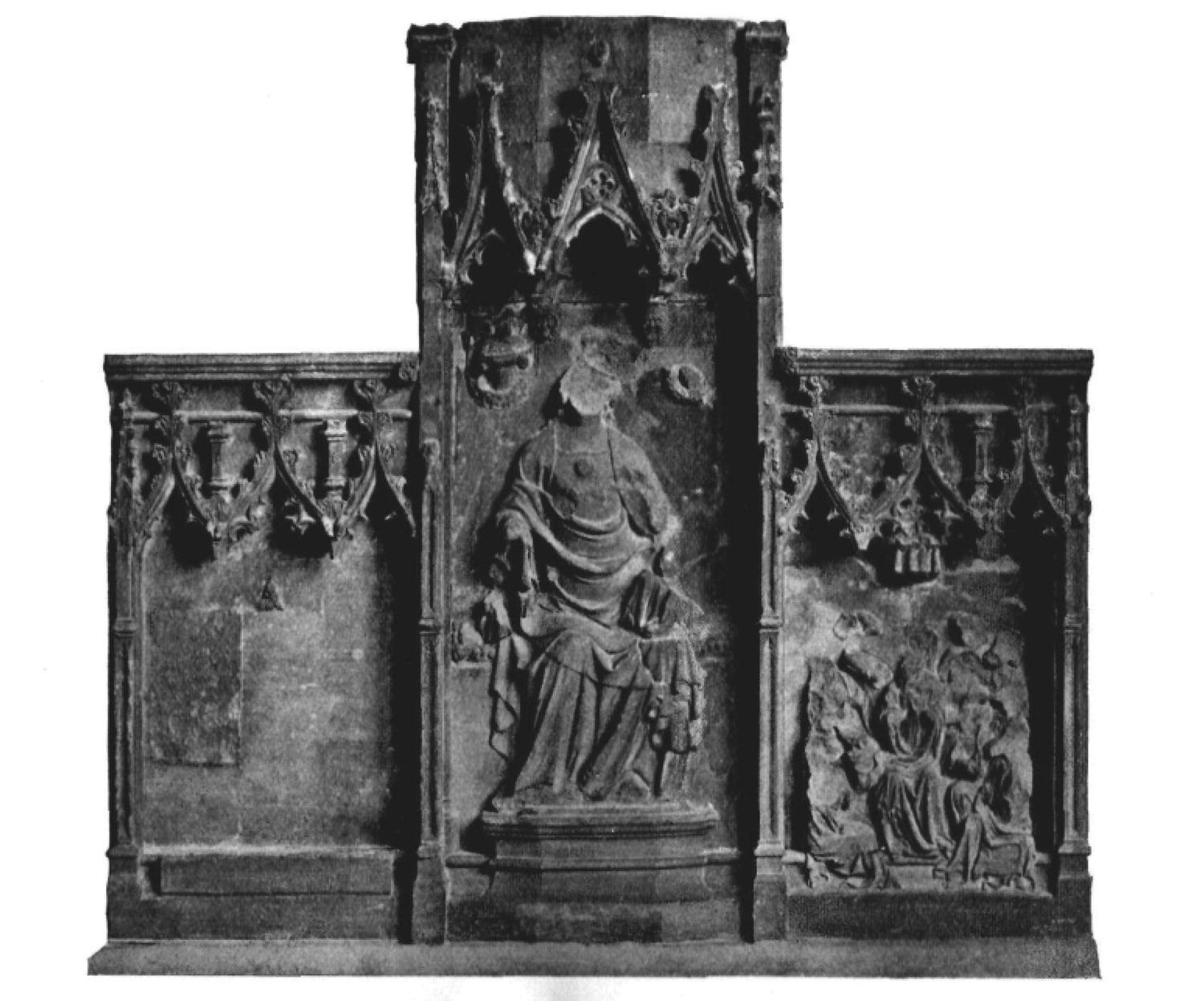
A Fourteenth- Century Altarpiece from Sutton Valence
Contributions to the next volume are welcome. See the guidance for contributors and contact Editor Jason Mazzocchi. Also see the guidance for peer review.
Search page
Search within this page here, search the collection page or search the website.
Notes on Helmets in Little Chart Church
General Notes and Correspondence
"^rpROM SUTTON VALENCE. 161 A part only of the altarpiece has survived to the present day—three panels composed of four pieces of Caen stone, which, evidently at the removal in 1823, have been fastened with iron bolts to a slab of York stone. These panels measure : Centre, height 4 ft. 8 in., width 2 ft.; side panels, height about 3 ft., width 1 ft. 6 in., giving a total length of 5 feet. But thera can be no doubt that two panels are missing from either side, and that originally the altarpiece consisted of five panels, i.e., four side panels of equal •dimensions and the larger central panel, which would give a, length of about 8 feet; a very usual measurement for the mediseval altarpiece. Of the three now remaining, that in the centre is carved with a singularly dignified figure of the Virgin seated under a canopied niche on a tasselled cushion with plaited knots at the corners; on her left knee she holds the Infant Christ, and her feet rest on a moulded base. Above her are two angels in clouds, the one on her right playing a psaltery closely similar to one played by an angel in the fourteenth-century singing gallery in Exeter Cathedral. The Virgin is wearing a jewelled brooch set with ten cabochon-cut stones with a four-petalled flower in the centre. The characteristic Decorated canopy is supported at the back by two grotesque corbels, an old man with long hair and a woman wearing a hood. Nothing is left of the subject which was carved on the left-hand panel, in fact the background has mostly been renewed. The right-hand panel contains the Ascension, the Virgin with the Twelve Apostles in an attitude of prayer, with the figure of Christ just disappearing in the clouds above; one of the Apostles h.as a book on his knee. Over these two panels are canopies consisting of three croeketted finials with hexagonal battlejnented towers between. These towers are pierced with •narrow windows to suggest a spiral staircase within. Below the towers, and between the three finials of the centre canopy, are pairs of animals, apparently pigs, dogs and sheep, as corbels* As has already been said, there can be no doubt that, as first executed, this altarpiece had five panels, and it seems equally certain that it represented a familiar subject in
